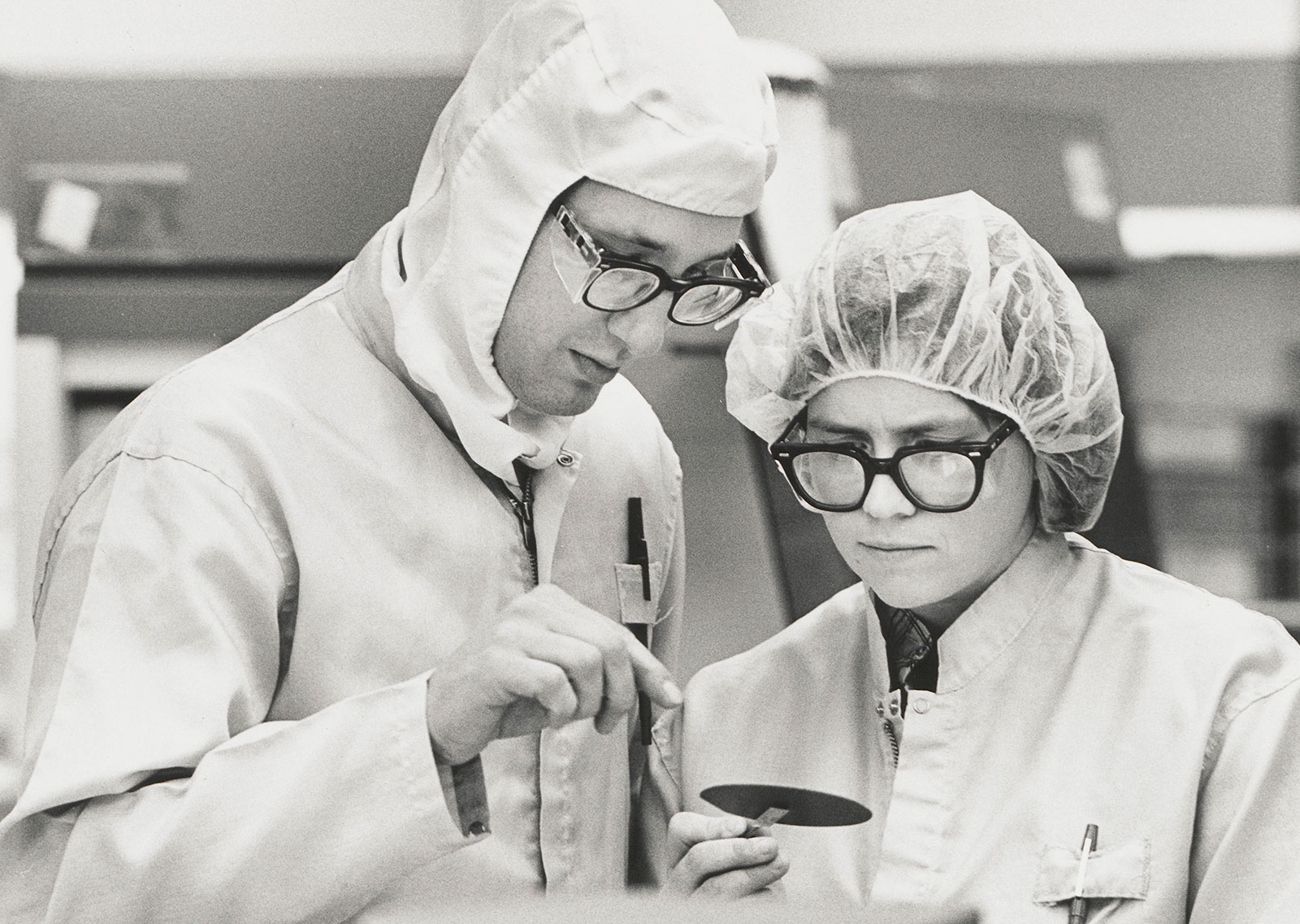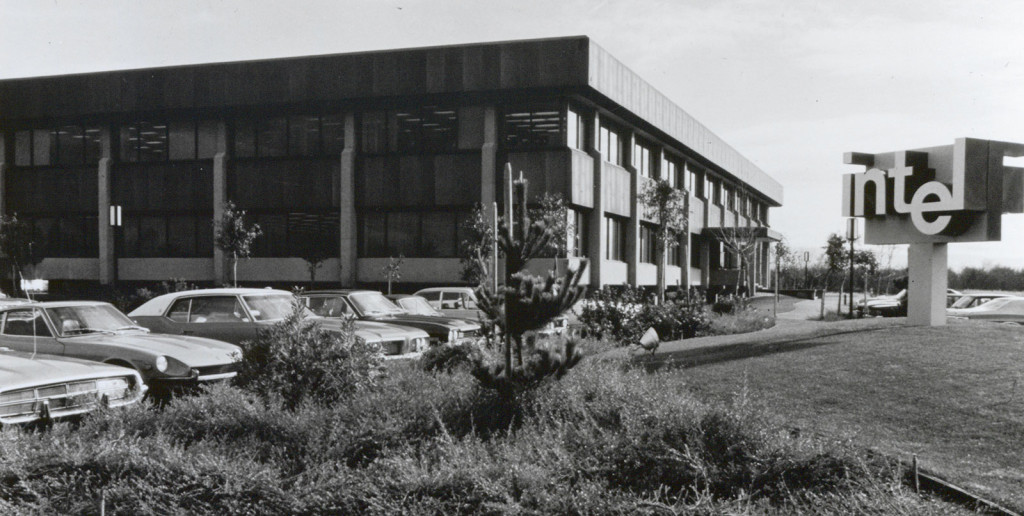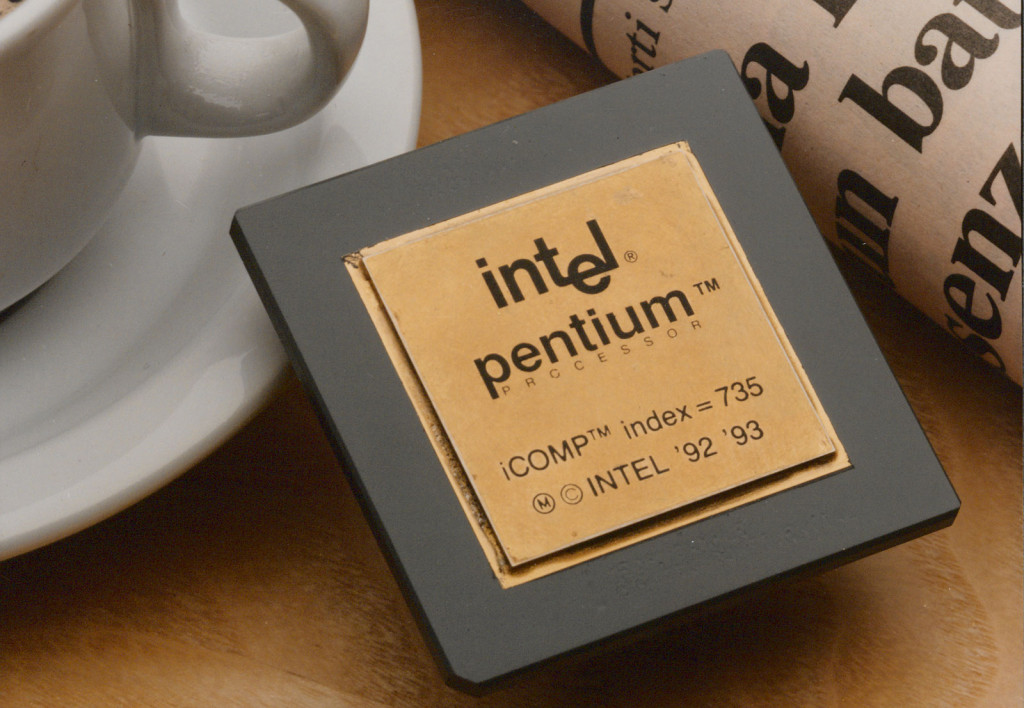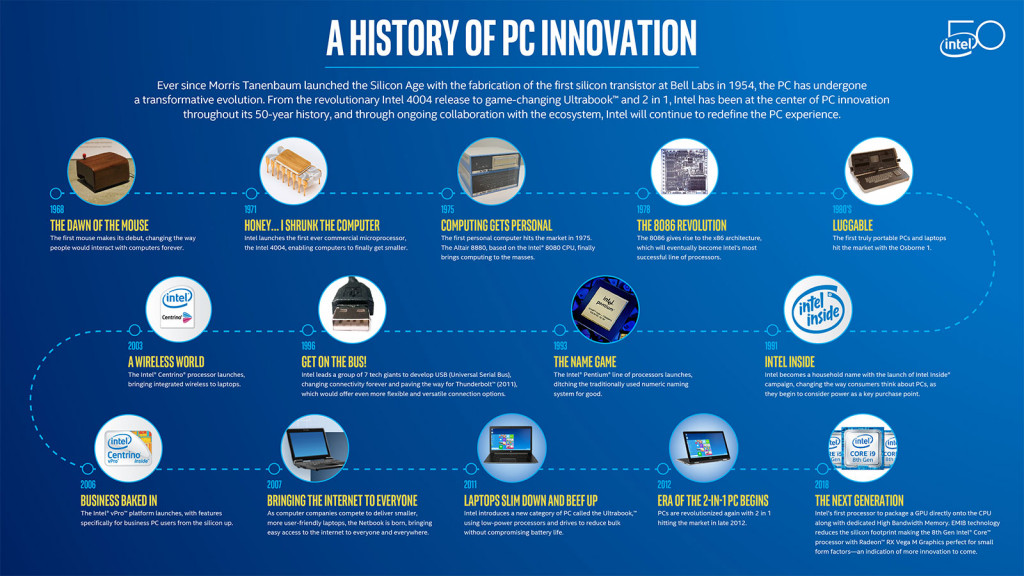Get the candles and cake: the chip sitting in most of the personal computers around the world is celebrating an anniversary this year, with Intel turning 50.
It’s hard to deny the strength that is Intel, and while it’s not the only computer processor maker in the world, it is one of the largest. You don’t have to look very far to find a computer with Intel inside, and this year, those chips can celebrate a legacy spanning 50 years.
Started back in 1968, by a chemist and a physicist, Intel was the creation of Gordon E. Moore and Robert Noyce, developing a company to build semiconductors. After a few years of wowing customers, it built a game-changing microprocessor, the Intel 4004, released in 1971, and it impressed even further by miniaturising the technology needed for computers even smaller than it had ever been.
Since that piece of hardware, Intel has been innovating in leaps and bounds, and is responsible for some of the biggest landmark processors used in computers, so much that it still stands out in the memory of those who grew up with it. Chips like the 8080 and the 80286 helped kickstart the personal computer generation — what we now know as “PC” — and chips like the 386 and 486 really took it home, making computers and their processors smaller than ever.
Intel’s big leap is the one most people knew from its ads, the Pentium, which was based on 486 architecture, before Intel expanded to the x86 architecture in its Pentium line. And fairly regularly, there have been chip improvements, speed improvements, and new processors for different classes of machines. While the Pentium chip name is largely ignored these days, you can still see it used for more budget computers, often branded with the Celeron name, which was used for value processors.
These days, the Intel Core branding is used on chips sporting performance, with the Core “i” about speed and power, the Core “m” about mobility, while the Atom chips are built for a different grade of mobility, and Xeon holds its own in the server and workstation world.
Intel also has more competitors than you might expect these days, and with the shift for mobiles gradually turning into the supercomputers we know them to be, Intel is competing with the likes of Qualcomm, Samsung, and Huawei for processors, not to mention AMD which is also fighting hard.
The company continues to be a massive driver in the computer world, not just with personal computers and servers, but for formats, as well. Intel is a part of why we have USB, Thunderbolt, and even why WiFi exists in laptops, as well, and we can only imagine how it will help shape the future.
Happy birthday, Intel.









